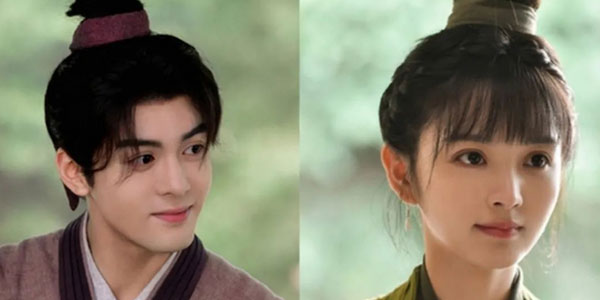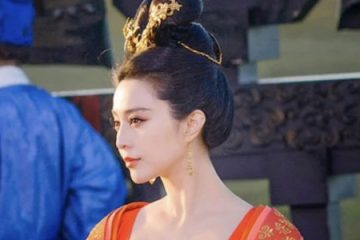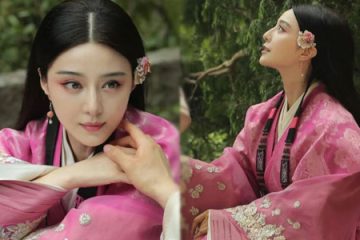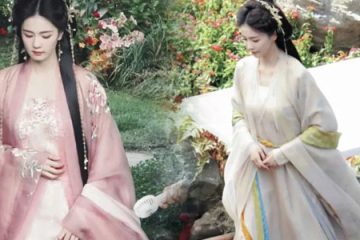The Commoner – Style Hanfu in Romance on the Farm Are Knowledgeable

We have previously elaborated in detail in our blog about some of the minor differences between Hanfu worn by common people and that worn by the nobility. These differences include three aspects: color, fabric, and accessories. In fact, there are still some small details that we can talk about.
Why do we see fewer Hanfu worn by common people compared to the gorgeous Hanfu in TV dramas? Is it because they are ugly? However, after watching the TV drama Romance on the Farm, everyone suddenly realizes: It turns out that “Hanfu worn by common people” can also be so beautiful!
I. The Basic Style – Narrow Sleeves and a Right-facing Front Placket
Most Hanfu styles don’t have a clear distinction between those for common people and those for the wealthy. Except for some styles that consume a great deal of fabric, such as large sleeves and styles with trailing hems, the differences of Hanfu worn by common people are mainly reflected in the manufacturing materials and accessories. For example, the nobility would use precious materials like silk, while ordinary people mostly used materials such as hemp to make their clothes. Moreover, their clothes usually had narrow sleeves, which were convenient for doing farm work or other laborious tasks.

In terms of the inheritance of the structure of folk clothing, the attire of the working people has continued the Hanfu style based on the “crossed collar with the right lapel overlapping the left”. This has also been a classic style choice of the Han ethnic group for a long time. Having been passed down for thousands of years, it has become the most important cultural symbol of Hanfu.
The “crossed collar with the right lapel overlapping the left” means that the collar is connected to the front lapel, and the lapels cross each other in front of the chest, presenting a “y” shape in appearance.
A central seam is commonly seen on clothes with crossed collars. This central seam represents the concept of being centered and moderate, which is a beautiful vision of Confucianism.
In the Along the River During the Qingming Festival painting, the most common style worn by people of all ages, both men and women, is the crossed collar. This can also indirectly prove that the crossed collar was the mainstream style of clothing for the common people.

In the TV drama Romance on the Farm, the common outfits of female characters can be seen as a combination of a half-sleeved garment (banbi) + a short crossed-collar top + a pieced skirt. They also wear a slightly shorter apron over the lower body, and they even wear trousers as the innermost layer. The overall look can be developed into various matching methods through color coordination within the same color scheme.

This style of the half-sleeved garment has been popular in various dynasties. It can have a front-facing opening, a crossed collar, or an open collar. In the case of Ming Dynasty clothing, square collars were once popular. The length of the half-sleeved garment is not fixed, and the crossed collar and front-facing opening styles are the most common. The open collar style was mainly popular in the Tang Dynasty.

Men also wore half-sleeved garments. The inner garment was usually a long crossed-collar robe, and they directly paired it with trousers on the lower body. In ancient times, there were already both crotch-sealed trousers and open-crotch trousers, which were very convenient to wear when doing laborious work.
In fact, there are many topics that can be discussed about Hanfu trousers, and we can release a blog later to popularize the knowledge about Hanfu trousers. Here, we can give a brief introduction. One type is the “underwear trousers” that can only be worn inside, such as kun and ku(裈, 袴). Another type is the crotch-sealed trousers that can be worn both inside and outside, such as dang (裆), and there is also a type of trousers used for keeping warm, such as tao ku (leg wrappers) .


Of course, one can also directly wear a long robe and trousers, and simply tie a belt around the waist.
The styles for children also follow this example, and similar styles can be seen in children’s paintings from the Song Dynasty.


In addition to half-sleeved and long-sleeved garments, there are also sleeveless styles. The sleeveless clothes are called “vests” or “bijia”. Generally, vests mostly have a front-facing opening style. Usually, this kind of sleeveless garment is worn over other clothes.

Ⅱ. The Wisdom of the Working People – The Four Seasons and Seasons of the Year
Throughout the whole drama, it not only reflects farming but also, most importantly, the timing of the seasons. Thus, there are color schemes corresponding to the four seasons, which we have sorted out as spring, summer, autumn, and winter. After all, China has a farming civilization that has continued for more than 5,000 years, and people are very familiar with what crops to plant at different times of the four seasons.
Spring represents hope and is the beginning of the vitality of the year. The lush green of the mountains and forests in spring can be used to interpret this joyful atmosphere, and we use the color green to express it.

In summer, it reminds people of the irrigation of the canals and the vastness and romance of the sea, so there comes the color blue, which represents coolness.

In autumn, it is the abundance of the autumn harvest and the simplicity and modesty. Therefore, we use the color brown to symbolize the color of wheat seedlings and wood.

In winter, what is most needed is the bright and vivid sun that kisses the earth. So, we use the color of the fertile reddish-brown soil to modify winter hanfu.

Summary
The main material of the clothes worn by the common people in the whole drama is hemp. Although it is not as shiny and beautiful as silk and satin, it also reflects a kind of simple beauty from nature, and these are the most down-to-earth colors in the hearts of us Chinese people.
It is worth mentioning that many netizens thought that the farmers in the drama were actors and praised the authenticity of their acting skills.
In fact, the farmers in this drama are indeed local villagers. From their initial reluctance to participate, to the participation of a few individuals, and finally to the participation of the whole group, their involvement has indeed made many details of the drama more vivid.

Overall, this drama reflects rural life. Although there are quite a few plot flaws and there is still room for improvement in the style of the clothes, fortunately, the theme is relatively rare, and it also allows us to see another charm of Hanfu worn by common people.



0 Comments